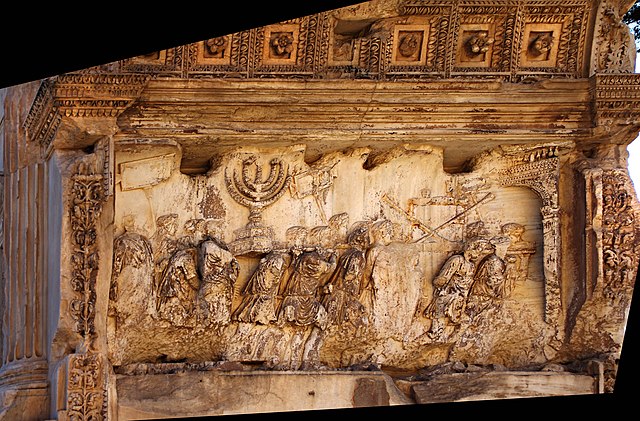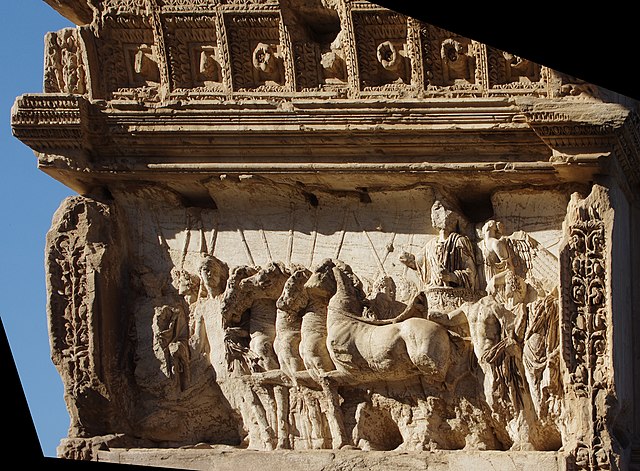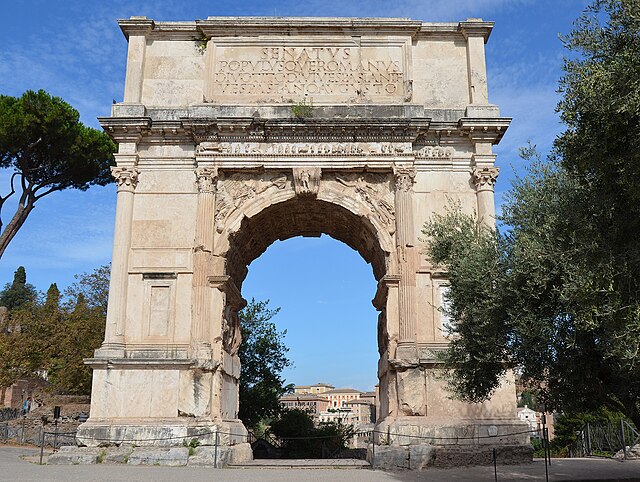During the Middle Ages, the archway was part of the Frangipani stronghold. A chamber was built in the upper half, and the roadway was lowered to expose the travertine foundations. Valadier repaired the attic and outer half of both piers in travertine after the structure was severely damaged in 1822.
Front view
Detail of the central soffit coffers
South inner panel, close-up of relief showing spoils from the fall of Jerusalem
North inner panel, relief of Titus as triumphator
A triumphal arch is a free-standing monumental structure in the shape of an archway with one or more arched passageways, often designed to span a road, and usually standing alone, unconnected to other buildings. In its simplest form, a triumphal arch consists of two massive piers connected by an arch, typically crowned with a flat entablature or attic on which a statue might be mounted or which bears commemorative inscriptions. The main structure is often decorated with carvings, sculpted reliefs, and dedications. More elaborate triumphal arches may have multiple archways, or in a tetrapylon, passages leading in four directions.
The Triumphal Arch of Orange in Orange, France, the oldest surviving triple-arched Roman triumphal arch, probably built during the reign of Emperor Augustus (27 BC–14 AD), later reconstructed by emperor Tiberius (c. 20–27 AD)
The Arc de Triomphe, Paris, begun by Napoleon in 1806
The Arch of Titus in Rome, an early Roman imperial triumphal arch with a single archway, built c. 81 AD by Emperor Domitian to commemorate his brother Titus's victory together with their father, Vespasian, over the Jewish rebellion in Judaea
The Arch of Septimius Severus at Leptis Magna, Libya, a four-arched arcus quadrifrons, built c. 203 AD








